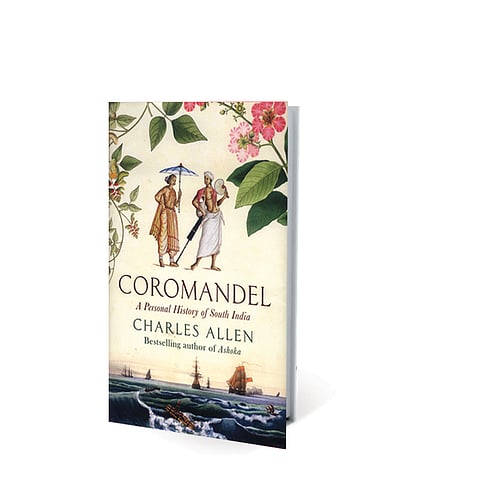
- Destinations
- Experiences
- Stay
- What's new
- Editor’s Picks
- Responsible Tourism
- CampaignsCampaigns
- Subscribe

One of my favourite walks in the Western Ghats is to the Naneghat Pass. Theres something unfailingly satisfying about ascending from sea level to arrive at the flat Deccan plateau. So I was pleased to see that Allen enters his chapter on the Satavahanas through Naneghat and the Brahmi inscriptions in its caves. From there he goes on to the 19th-century British officials who documented the inscriptions, the German epigraphist who deciphered the inscriptions as the 2,000-year-old account of Vedic sacrifices performed by Satavahana rulers, the Roman trade that passed through and probably funded the cave inscriptions as well as the Satavahana patronage of a Buddhist revival in the south, and on to recent discoveries of Buddhist sites in Andhra, such as Kanaganahalli, which will in time become as world famous as Sanchi or Ajanta as one of Indias very few well-preserved early Buddhist sites.
As a cultural history of southern India, Coromandel is meant partly to correct the tendency to equate India with its north. Its termed a personal history, which accounts for the freewheeling narrative style, Allens deep engagement with India, and the discretionary omission of large portions of south Indian history.
The book begins with pre-historythe hunter-gatherers of India, the advent of agriculture known through archaeology, language and genetics (though the advances in palaeogenetics in the last few years are not represented). It arrives at the present day via the complex interactions of Jains, Buddhists and Hindus, the evolution of deities and traditions as they played off each other, figures like Agastya and Thiruvalluvar around whom identities were built, the arrival of European colonisers, an account of the formation of Kerala society, a chapter on Islam in the south, and the Dravidian movement of the last century, all amid the coming and going of rulers and dynasties. Allen writes that colonisation certainly worked to the advantage of the British, but it had some upsides for the colo-nised, among them the modern era of Indian historiography and Indian studies. Coromandel is in part a tribute to colonial British administrators, scholars and Orientalists who began piecing together Indian history.
Allen writes engagingly and with a great deal of affection for his subject. He is also a sceptical writerHistory should never be reassuringalways looking to go beyond legend and myth to arrive at a more nuanced story. Compelling as they are, these stories go off in so many directions that the book seems to lack a continuing thread, a central argument, a resting note. Also, more citations would have been welcome. For example, it is not clear if Allens identification of the Rig Vedic Saraswati river as the Harut comes from his own analysis. The book could have done with some fact checking there is no Chitaldurga district in Karnataka, Srikakulam is not in northern Odisha, Kappagallu does not mean Peacock Hill, and so on. And I wonder what Allen was getting at when he says M.M. Kalburgi was both a Brahmin and a Lingayat.
History is a diffused thing. We may not remember particulars, but everything weve read or heard adds to a broad awareness that enriches our experience of place, our sense of how the world came to be what it is. On that account, Coromandel certainly works. Theres much here that probably hasnt been written about before for a popular audience, and its put together with a definite and attractive sensibility.
